Ernest Hemingway brilliantly said “never go on trips with anyone you do not love.”
Taking that to heart, I am so grateful for my friends that double as perfect travel companions. We have been to a lot of amazing places together and were each super excited to get back to Key West.

Cayo Hueso
Key West was first known as Cayo Hueso, Spanish for “Island of Bones,” because it was used as a communal graveyard of early Tequesta and Calusa Native American tribes.
English speakers misunderstood the name, thinking the Spanish speakers were saying “Key West,” and the name stuck.
In the early days of Key West, residents became rather wealthy from conducting shipwreck dives and selling off what they were able to find and salvage. They also created successful enterprises in fishing, sea salt, and sponges.

Modern day Key West is an extremely walkable island about four miles long and between one-two miles wide. It is surrounded by the Gulf of Mexico and the Atlantic Ocean on all sides. You can fly there, but we chose to drive from Miami through the Florida Keys.
More than forty bridges connect Key West to mainland Florida, and the Overseas Highway is the most prominent.

Known also as the Seven Mile Bridge, Overseas Highway is painted the iconic “Key West” shade of green and is surrounded by vast ocean, coral reef and rock, sea gulls, fishing piers, and remnants of the Overseas Railway.

Cuban Flair
Key West is filled with Cuban inspired food, music, architecture, and people. The city is actually closer to Cuba than it is to Miami, the nearest US mainland city.
During the Ten Years’ War of the 1860s-1870s, Cubans fought unsuccessfully for independence, and many moved to Key West seeking refuge after it ended.
With them they brought cigar factories and skilled workers, establishing Key West as a major player in the cigar industry. After a fire ruined many of the factories, the companies packed up and resettled in Ybor City.
By 1890, half of Key West’s residents were Cuban, and many of its leaders and businesses were Cuban as well. Jose Marti, a celebrated revolutionist in Ybor City, often visited Key West seeking support for Cuban independence and the Cuban Revolutionary Party.
Key West and its ties to Cuba remain strong. Learn more about this in the San Carlos Institute of Cuban Heritage on Duval Street.

Just like in Cuba, Ybor City, Tampa, and other Cuban-founded cities, you will see roosters and chickens roaming around freely.
It has been like this for as long as anyone can remember, and many of the birds fall under protected species regulations, so don’t mess with them.
Key West flags and souvenirs often incorporate rooster imagery in the designs.

Conch Republic
Key Westers often call themselves the Conch Republic. A conch is a large sea snail whose meat is highly prized, but in Key West, a conch is a person who was born and raised there.
In 1982, citizens banded together to protest police blockades of Overseas Highway, the only access point where you can drive to and from the US mainland. Border Patrol was stopping every car to search for drugs and illegal passengers, which became a serious nuisance to residents just trying to get to work, school, church, doctor’s appointments, and pay bills each day.
The blockades also deterred tourists, and Key West relies on tourists to stay afloat.

Members of the protest first announced themselves as the Conch Republic and filed for secession from the United States, but most of their stunts were for comedic purposes and jest.
They “attacked” official vehicles with water balloons and handfuls of sea food, composed their own theme song and blasted it at top volume, and put together their own mock army, navy, and other branches of fleets that donned uniforms and regalia.
They lurked in the waters around the blockade, seemingly to annoy the Border Patrol in return.
Eventually they gave up the antics after getting into some trouble, but Conch-ers still keep the memories alive, host events, offering Conch Republic history tours, and celebrating the Conch Republic Independence Celebration each April.

Key West Garden Club
The Key West Garden Club is one of my favourite spots in Key West. It is located inside the historic West Martello Tower, an old Civil War fort, and is on the National Register of Historic Places.

The Garden Club is a non-profit powered by volunteers in everything from maintaining the garden, administrative duties, and guided tours. We were greeted by this cutie, who showed us the way and checked on us throughout our visit.

There are various rooms and themes in the garden, and the following two photos were my favourites.


An unbelievable amount of vibrant and rare orchids are housed in the gardens. Some looked so perfect we thought they were fake, but they are real, and well-cared for.


The Garden Club is full of lush, exotic, tropical plants we do not often see living in Appalachia, and I loved every second of it.

Bahama Village
Our favourite meal was at Pepper Pot Island Café, which showcases a fusion of cuisine from Trinidad and the Caribbean.

We shared the Roti, Geera pork, and Jerk chicken. Holy smokes, check out the menu!

We also tried the daily special, a fish cake on brioche with starfruit chutney, key lime aioli, Caribbean slaw, and arugula.

The owner and her little girl were both a delight to talk to. They make their own hot sauces and also sell them online.

Pepper Pot Island Café is surrounded by brightly-painted buildings, murals, festive gardens, and street art in a mostly residential neighbourhood called Bahama Village.
I later learned that this village has many historic sites connected to Key West’s African-Bahamian history and people.

Bahama Village is quiet and less crowded, over on the west end near Fort Zachary Taylor Historic State Park. Its colour and character makes it one of the most endearing places we visited.

Take a stroll afterward around Fort Zachary Beach, walk the Truman Waterfront, or head back over to Duval Street where all the tourist action is.

Pink Triangle
At the intersection of Duval and Petronia Street, the Rainbow Crosswalk extends in all four directions.

This part of town is affectionately called the Pink Triangle, runs along the 700 block of Duval Street, and is the center of Key West’s LGBTQIA2S+ community.
By creating the Rainbow Crosswalk, Key West hopes to send the message that it is inclusive and welcoming of people from all walks of life.
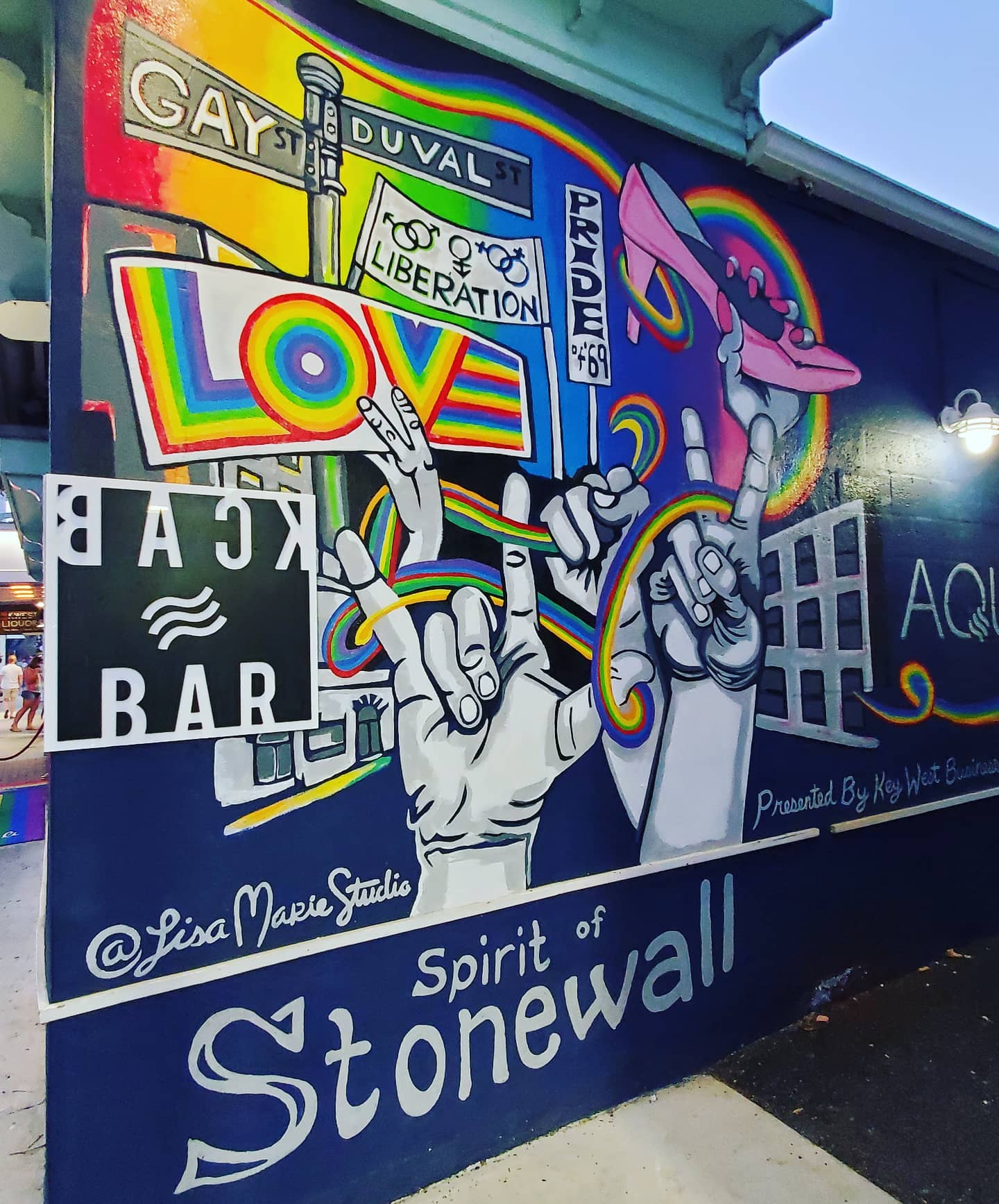
Popular bars in the Pink Triangle area include Aqua, Bobby’s Monkey Bar, The Bull & Whistle Bar, and its upstairs tenant, the Garden of Eden.
Bull & Whistle Bar’s rude employees were unimpressive, but we had a blast at Garden of Eden where clothing is optional.
Security is ON POINT, making sure no one takes photos of patrons. They also keep tabs on any creepers that lurk, cross boundaries, or harass others, and they expel them immediately. Kudos to the staff!
I won’t give away all of our secrets. Just be brave, walk upstairs, and enjoy the view.

Historic Key West Cemetery
Key West’s historic cemetery spans nearly 20-acres and holds the remains of a most diverse population. Catholics, Jews, Veterans, Civilians, Bahamian marine workers, cigar magnates, and people of all backgrounds are buried together.


It began in the 1840s as simply the City Cemetery, and continues to be an active cemetery with around 100 new burials per year.

You can schedule a guided tour or pick up a cemetery map in the front office.

We learned some creepy stories about Key West while we were visiting, but the most famous by far is of Robert the Doll.
I am a fan of Aaron Mahnke’s podcast, Lore, and I had just listened to Episode 15: “Unboxed.” Mahnke described Robert the Doll as a gift given to a young boy named Gene around 1898 by his Jamaican nanny.
Gene did everything with Robert the Doll; they ate, played, slept, completed chores, bathed together, and dressed alike. When Gene was overheard having conversations in other rooms, his parents thought Gene was just having a good time with his doll, but the conversations escalated and Gene was often found cowering in a corner or crying. Oh, and they heard a second deep voice that was definitely not Gene’s.
Gene and his family were plagued by constant destruction in the home including their clothing, dishes, and furniture. Giggling and foot steps woke them in the night, and Gene would often wake up screaming.
Neighbours reported seeing Robert staring out windows or moving around on his own while the whole family was away.
Staff was difficult to keep around because they kept getting locked out and terrorized.
Gene’s aunt had enough one day, and locked Robert the Doll in the attic. She was found dead the next morning, and Robert the Doll was immediately returned to Gene.
As Gene grew older he traveled the world, became a successful painter, and got married, always with Robert at his side. Robert had his own chair in the couple’s bedroom and a seat at their dinner table. The same patterns of destruction and haunting tormented Gene’s wife to the point of insanity and then her eventual suicide.
Time passed, Gene passed, and when a new family moved into the house they discovered Robert the Doll. They put him in the attic and began settling into their new home, only to wake up in the middle of the night to see Robert the Doll standing over their bed with a knife. That’s the story.
You can see Robert the Doll for yourself in the Fort East Martello Museum or book a ghost-hunting tour that includes a visit with Robert.

Southernmost Point
Key West is the southernmost city in the United States, a title it proudly holds and that often lends merit to local businesses. A visit to this concrete replica of a buoy is one of the top selfie/photo ops in Key West.
It was at the end of our block so I was able to slip down early in the morning before the long lines formed.

Key West Lighthouse & Museum
The Key West Lighthouse opened in 1848 and was first kept by a woman, which was considered shocking in those days. It was decommissioned by 1970 with the advancement of technology, and is now a museum for Key West’s maritime history.

Kermit’s Key West Key Lime Shoppe
Even though Key Limes are no longer grown in Key West, its famous Key Lime Pie dessert is still all the rage. Kermit’s is the place to go for the essential Key Lime Pie experience.

Mallory Square
Most tourists head straight to Mallory Square when they arrive in Key West, and for good reason.


Mallory Square is home to the Key West Shipwreck Museum, several shops, and prime spots to catch the Conch Tour Train or an Old Town Trolley Tour.

You can also visit the Key West Shell Warehouse and the Key West Sponge Market.
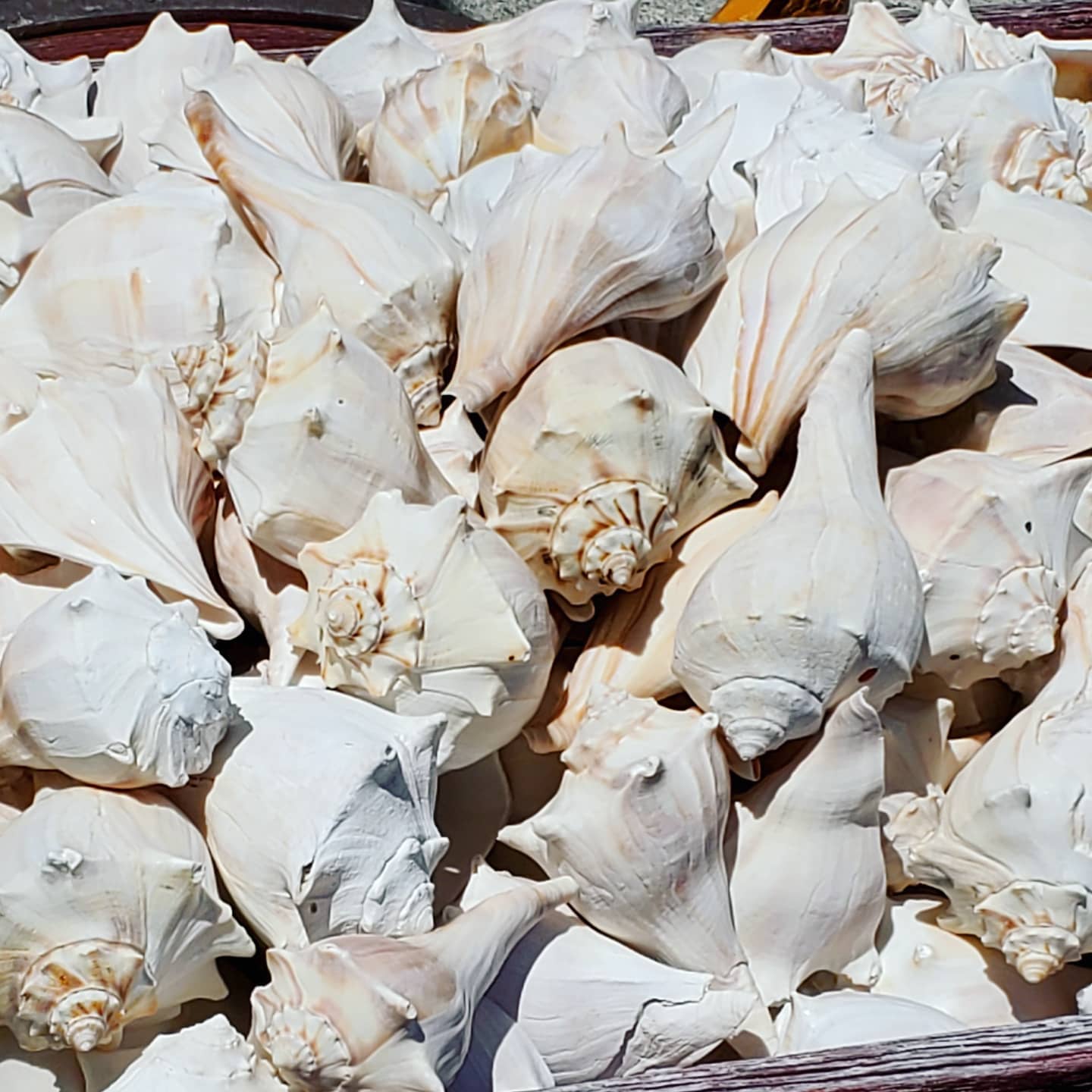
The Key West Aquarium is here too, right next to Key West Original Conch Fritters.

I didn’t want to eat them.
I really didn’t.
I know people would ask though, so I did it for the blog. Conch fritters are similar to takoyaki, or chewy bits of octopus/squid inside a hush puppy.

The Harry S. Truman Little White House, Audubon House & Tropical Gardens, and the Mel Fisher Maritime Museum are all nearby.

Key West celebrates the sunset every night with live music, street performers, tarot readers, magicians, drink specials, and other festivities.

Many of the artists and performers stay out into the late hours of the night as well.

Key West Historic Memorial Sculpture Garden
This garden is also known as “Bust Park” for all of the busts it features of prominent Key West citizens and figures.


One of these busts is of famous playwright, Tennessee Williams, who also has a museum dedicated to him on Truman Avenue.

Key West Museum of Art &History
The Key West Museum of Art & History is located inside the Custom House where Mallory Square becomes the Seaport District.

Seaport District is a lively complex with the Key West Bight Museum, Schooner Wharf Bar, Waterfront Brewery, Half Shell Raw Bar, lots of places to charter boats, book tours, go scuba diving, shop, and buy souvenirs.

An iced coffee from Cuban Coffee Queen’s Waterfront location hit the spot on this sweltering day.

Key Lime Square
Continue on Duval Street to Key Lime Square, where you will find Shipwreck Treasures of the Keys Museum and various outdoor installation.

Key Lime Square is also the site for some of the city’s best art galleries including Key West Gallery, Wyland Gallery of the Florida Keys, and others. There are several clothing boutiques and restaurants here too.

Smallest Bar in Key West
Key West has a functional tiny bar that takes up less than 75 feet of square space. You can order just about anything inside, but the lines of people trying to squeeze in for a photo can be daunting.

The old Strand Theatre is now a Walgreens, and it is the wildest upgrade you could imagine.

Where to Stay
If you are new to Key West or looking for a prime tourist experience, you need to stay on or near Duval Street. This is the main drag that cuts all the way through the island from north to south, shore to shore, described as a mile-long block party and pub crawl.

Look for a rental or BnB in Old Town, the Key West Historic District, Bahama Village, Mallory Square, or basically any place west of White Street, which also cuts through the island.
East of White Street, you will miss out on the true “walkable island town” experience.
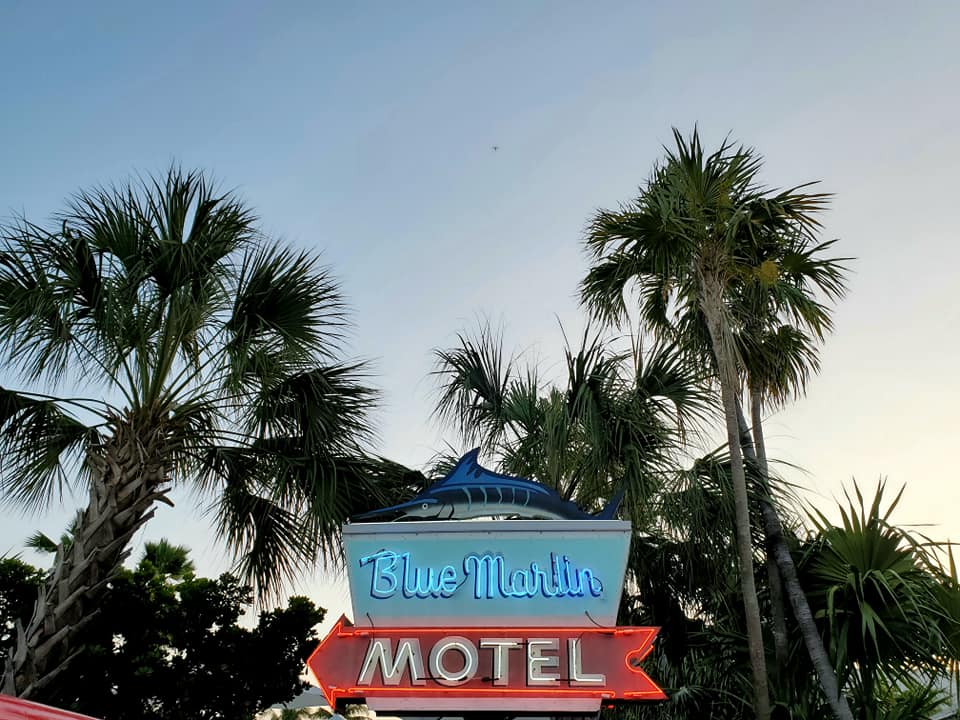
Blue Marlin
We stayed at the Blue Marlin at the south end of Duval Street, a block from the ocean, and a block from the Southernmost Point tourist spot.
It was an easy walk up Duval to the Key West Butterfly and Nature Conservatory, then to make a left on Truman Avenue to visit Ernest Hemingway’s House and the Key West Lighthouse.
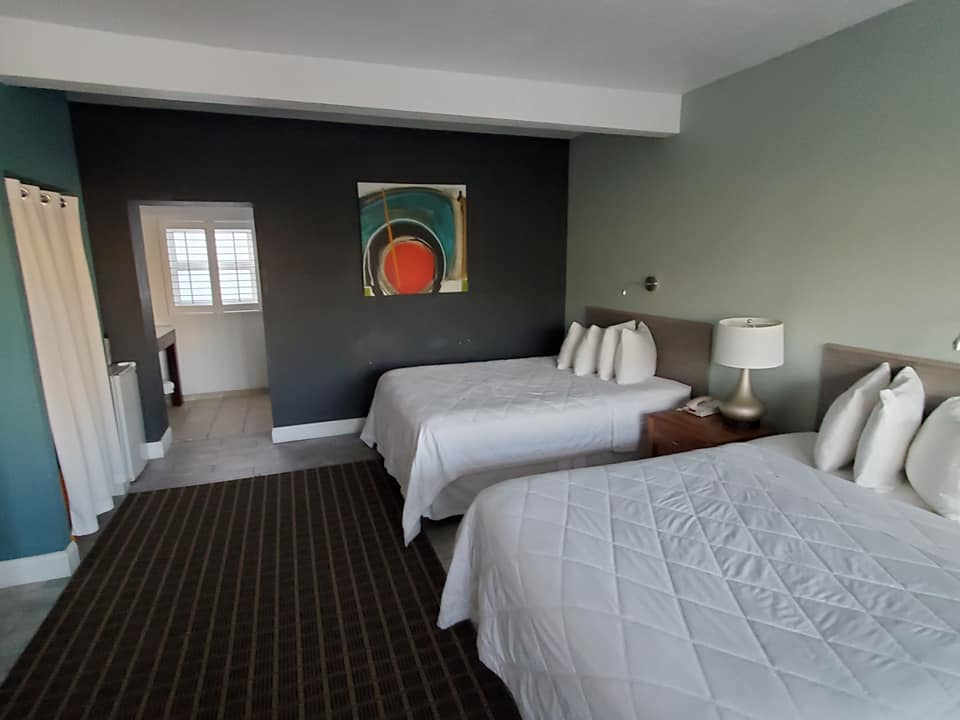
The rooms were clean and comfortable, and we had the pool to ourselves.

Blue Marlin is just a few dozen steps away from the ocean view.

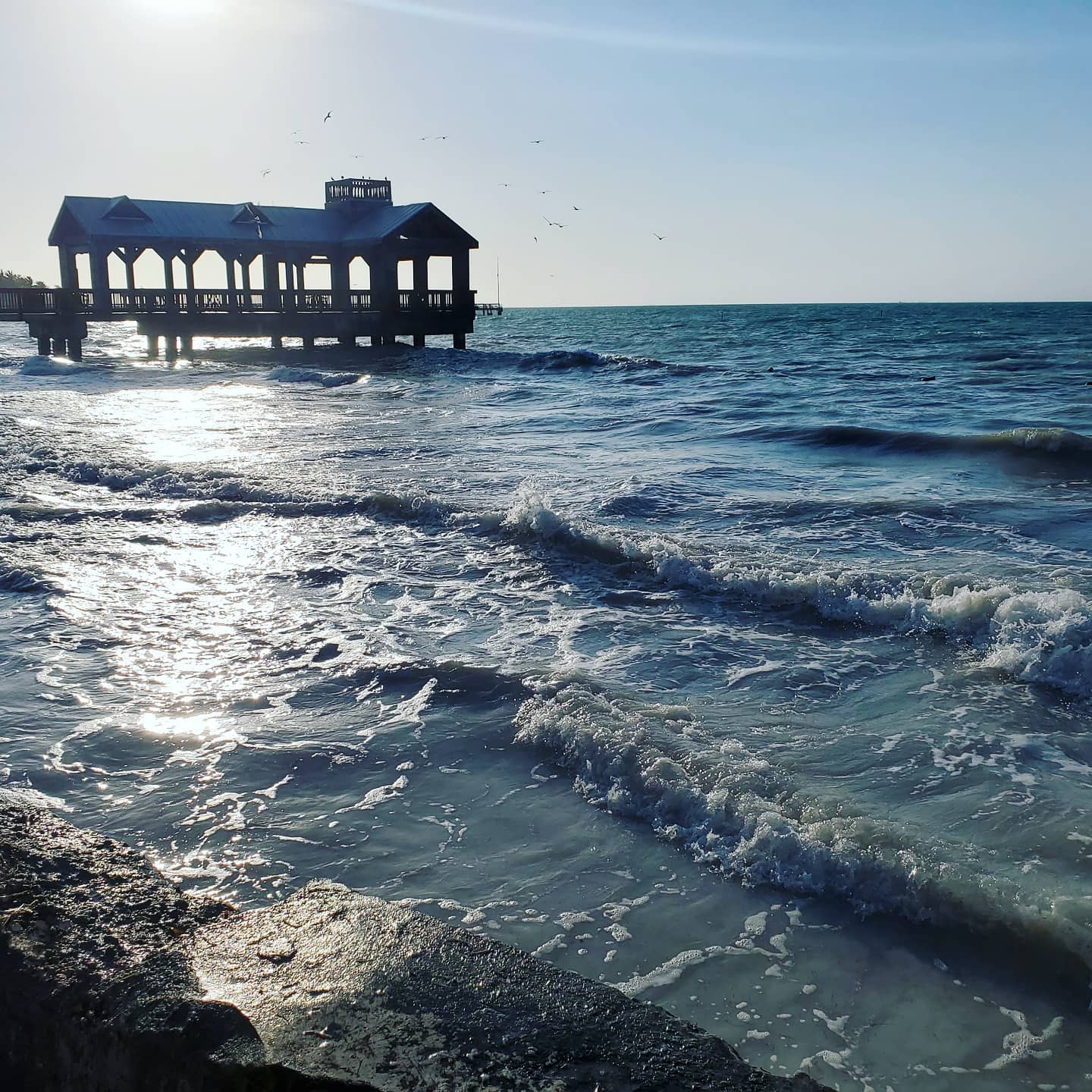
You can see a few different piers in the distance, and there are informative plaques about them.

Southernmost Point Bar & Guesthouse
From Southernmost Point Buoy and the Butterfly Conservatory, you can easily walk to the Southernmost Point Bar & Guesthouse.

Then walk, bike, or drive down to Higgs Beach and the Key West Garden Club.
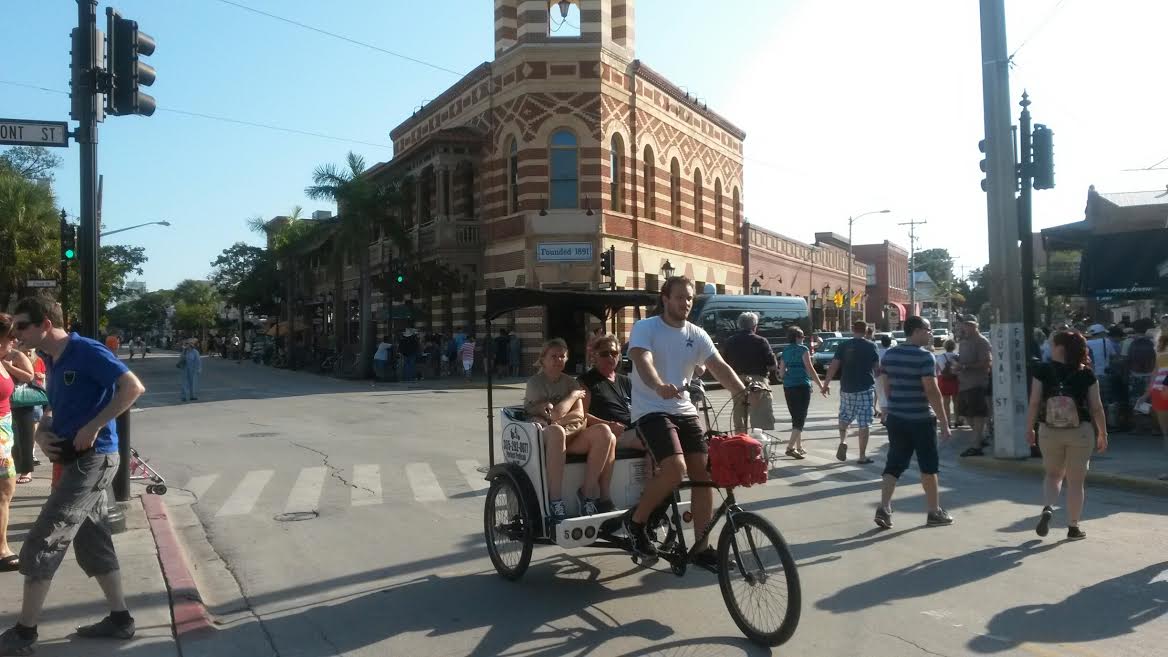
It is so easy to get around Key West, and you can rent or buy bikes from stands all around the island. Most people who live there prefer to take their bikes out instead of driving, which is perfect for a tourist town.
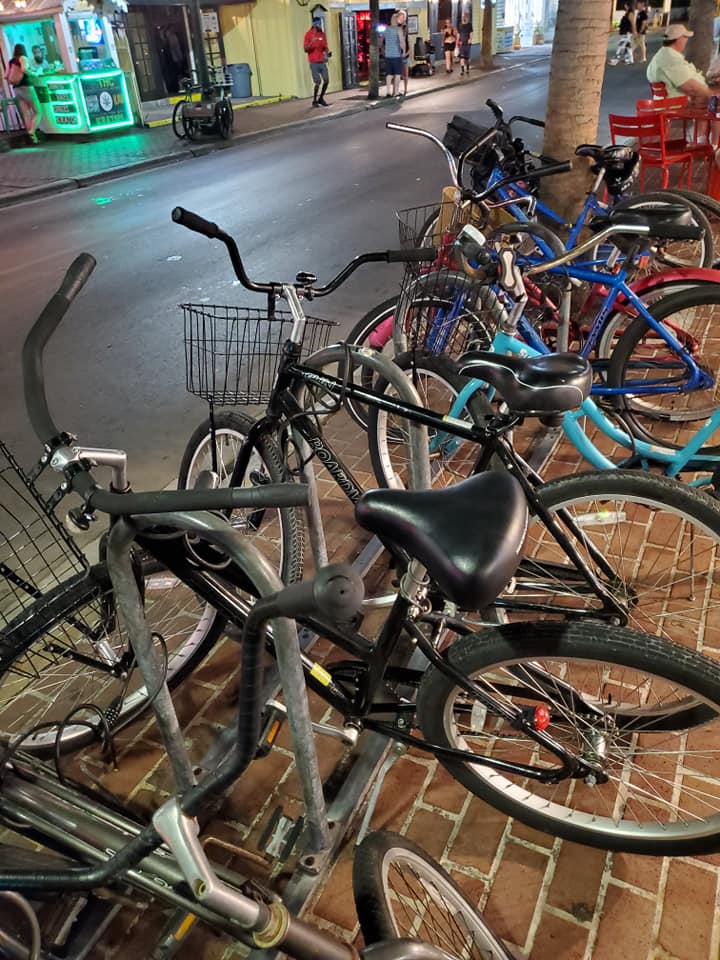
Hemingway House
What could I say about Ernest Hemingway that has not been said a million times?
Key West is famous for being one of Hemingway’s favourite places on Earth. “Papa” lived in this house on Whitehead Street through most of the 1930s and it has been the Ernest Hemingway House Museum since 1964.
Within four years, it made its way onto the National Register of Historic Places.

Hemingway House is arguably the most popular, singular destination in Key West, made even more famous for its polydactyl residents.
Hemingway loved his cat Snow White, and eventually others, that were born with a special genetic mutation that lends extra digits. The cats on site today are descendants of Hemingway’s beloved beasts.

Sloppy Joe’s Bar
Hemingway was widely known to be a regular at Sloppy Joe’s Bar, even though the original location was where Capt. Tony’s Saloon is.

We enjoyed a few beers while waiting on a world-class Sloppy Joe.

I will be honest and tell you I loathe Sloppy Joe sandwiches, so my opinion on this one matters none. My friends enjoyed it and I am confident that it is the best one you will find worldwide.

Sloppy Joe’s is covered floor to ceiling with art, articles, and artifacts about Hemingway and the bar’s history.

Each year, Sloppy Joe’s hosts the Hemingway Look-Alike Contest and people throw down for this event!

You can just see the lawless joy on their faces, and I am here for it. Now that I think of it, my friend’s dad that would be a strong contender for some of these fellers.

Captain Tony’s Saloon is the oldest bar in Florida and has bragging rights as a former haunt for great writers including Hemingway, Tennessee Williams, and Truman Capote, but its main angle seems to be that it used to be the location of Sloppy Joe’s.

Papa’s Pilar Rum Distillery aka Hemingway Rum Company was not open when we stopped by, but they stand in homage to Papa himself.

Last but not least, because there are many other notorious Hemingway Haunts in Key West, visit Blue Heaven for brunch.
This venue has been many things in its past, but was a gambling and boxing match hall when Hemingway lived in Key West. Word has it that he was the referee and spent a great amount of time inside.

In the area for a while? Follow me to our two favourite stops along Overseas Highway through the Florida Keys, through the Everglades National Park, and to Naples!
*************
© Fernwehtun, 2015- Current. Unauthorized use and/or duplication of this material without express and written permission from this site’s author and/or owner is strictly prohibited. Excerpts and links may be used, provided that full and clear credit is given to Fernwehtun and Fernwehtun.com with appropriate and specific direction to the original content.



Pingback: Cruising the Florida Keys; The Two Places You Can Not Miss Between Key Largo and Islamorada | Fernweh
Pingback: Sea Cruising and Chickee Bars in Naples | Fernweh